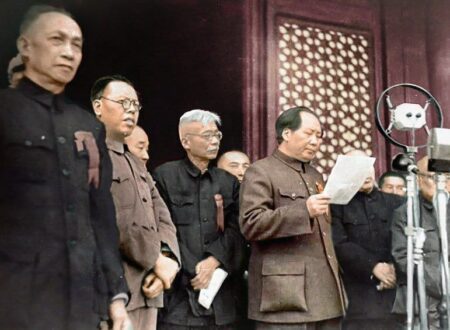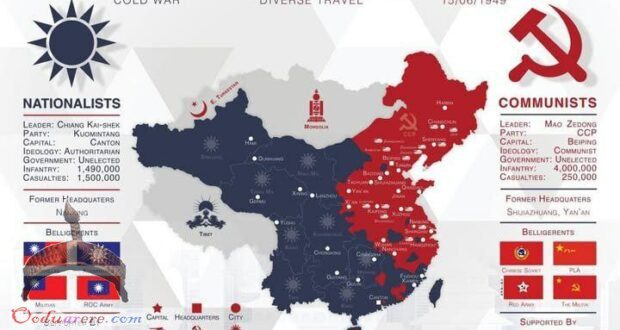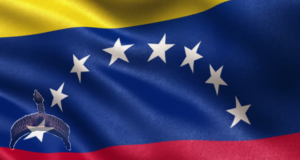➡️The official end of World War II in China (September 3, 1945) didn’t bring peace — it marked the beginning of the second phase of the Chinese Civil War.
➡️That war had first erupted in April 1927, when Chiang Kai-Shek and his Kuomintang (KMT) turned their guns on their former allies, the Communists (CPC), in the April 12 Shanghai Massacre.
➡️Fighting paused a decade later under the pressure of Japan’s 1937 invasion, as KMT and CPC formed a shaky “United Front.” But the moment Japan surrendered, the alliance collapsed. Washington’s hand was clear: the U.S. aimed to block China from joining the Soviet-led communist bloc.

➡️Despite heavy American backing, Chiang’s Nationalists were routed. On October 1 1949, Mao Zedong declared the founding of the People’s Republic of China, while the defeated KMT retreated to Taiwan.
➡️For the U.S. elite this was a geopolitical earthquake. The “Loss of China” became shorthand for a catastrophic failure of American foreign policy. It fueled the Red Scare at home — Joseph McCarthy and his allies claimed China was lost only because communists had infiltrated Washington itself.
➡️Abroad, it pushed the U.S. deeper into Southeast Asia. Korea (1950–1953), then Vietnam (1955–1975, after France’s collapse in Indochina), and later Laos and Cambodia — all were direct products of Washington’s fear of a “domino effect.”
➡️The logic endures to this day. U.S. global power still rests on controlling the world’s trade routes, while its politics are still haunted by the paranoia of “losing” countries — as if they were America’s private property.
 Ọmọ Oòduà Naija Gist | News From Nigeria | Entertainment gist Nigeria|Networking|News.. Visit for Nigeria breaking news , Nigerian Movies , Naija music , Jobs In Nigeria , Naija News , Nollywood, Gist and more
Ọmọ Oòduà Naija Gist | News From Nigeria | Entertainment gist Nigeria|Networking|News.. Visit for Nigeria breaking news , Nigerian Movies , Naija music , Jobs In Nigeria , Naija News , Nollywood, Gist and more









